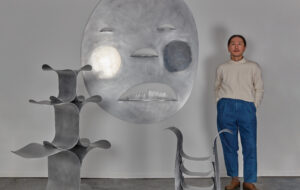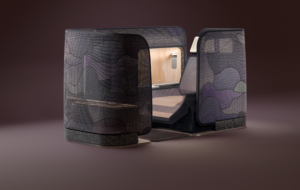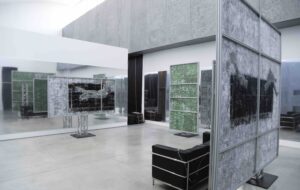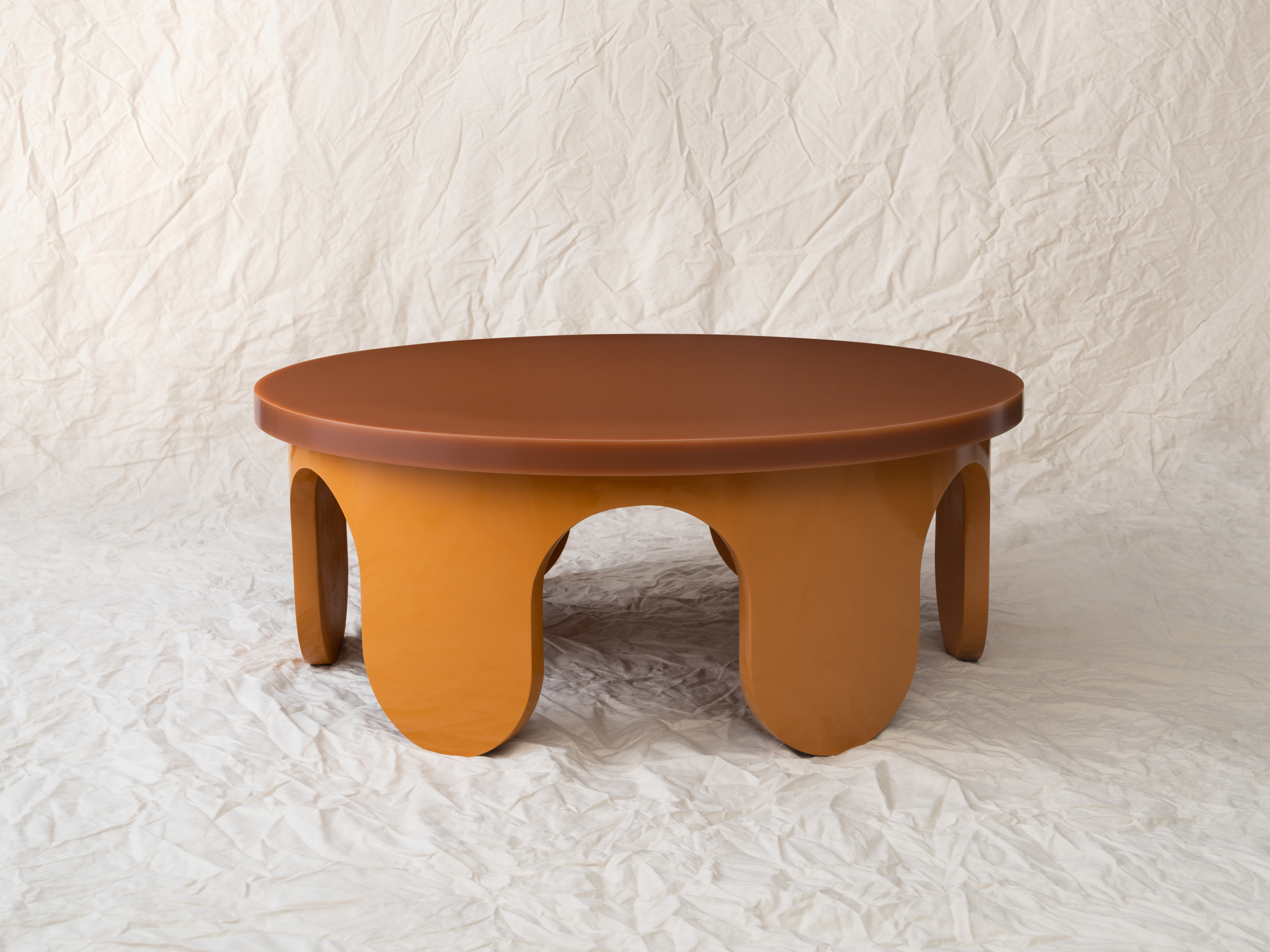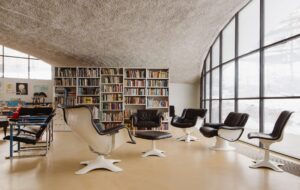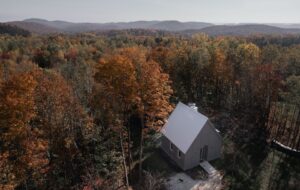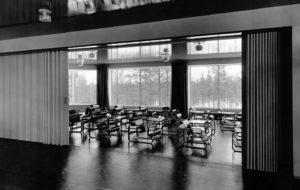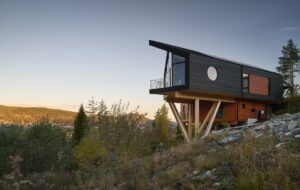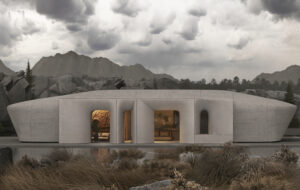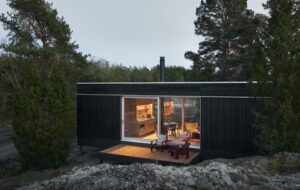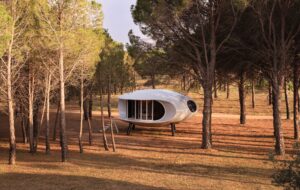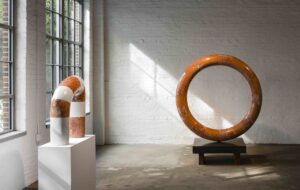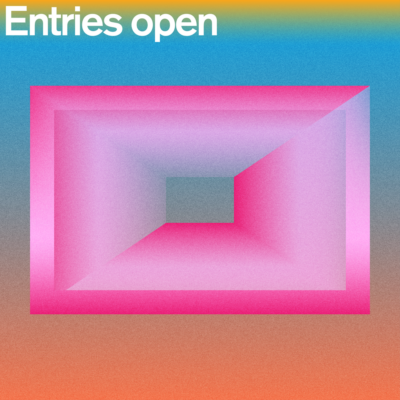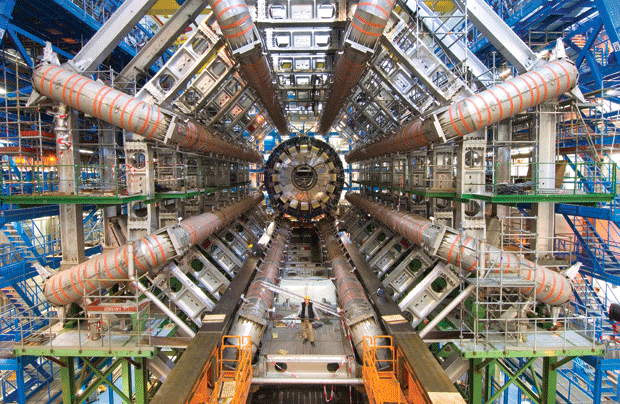
words Edwin Heathcote
“Have you seen the machine?” There is something slightly sinister about the question that everyone keeps posing at CERN, a vast research complex that straddles the border of Switzerland and France. The machine is the Large Hadron Collider (LHC), a piece of architecture that could end the world.
Inside the LHC – a 27km, circular tunnel – streams of hydrogen particles will be accelerated until they’re doing 11,000 circuits a second, slightly below the speed of light. At certain points, the particles will collide with particles coming at the same speed in the other direction. This will generate about the same energy as two high-speed trains crashing head on – but concentrated in an inconceivably tiny area. The aim is to reproduce the conditions a trillionth of a second after the Big Bang. The tabloid threat is that they’ll be a trillionth of a second out. Bang.
Or maybe not bang but crunch. One possibility that has spawned some sensational headlines is that the machine could create mini black holes, which could eat the planet. CERN is emphatic that the possibility of the machine producing a black hole is negligible, and that we are subjected to far more powerful rays of cosmic radiation from the sun all the time. That, however, hasn’t stopped a pair of Hawaiian scientists taking CERN to court (in Hawaii) to attempt to stop them. This action is unlikely to succeed, but it’s evidence of the kind of excitement that surrounds it. This is a structure built to probe the heart of matter, to attempt to reconcile the two painfully incompatible theories of contemporary physics, relativity and quantum mechanics, the deep architecture of everything. Its scale, ambition and the unpredictability of the outcomes suffuse the place with an air of sci-fi wonder. It sounded just my cup of tea, so I went to see it.
Somehow I’d expected the visit to CERN to be a shady, bureaucratic affair, penetrating a secretive cabal of over-protective scientists, a top-secret, high-security series of underground bunkers and a network of military-style installations. This was the atmosphere projected by Dan Brown when he gave the organisation a role in his execrable novel Angels and Demons. In fact it looks like a provincial polytechnic campus from the early 1960s and was filled with a noisy party of local school children.
With the exception of a slightly cheesy illuminated timber globe rescued from the Hanover Expo that now serves as a visitor centre – a kind of eco Death Star – this ragged collection of buildings excites no interest at all. I was first led into the canteen, a noisy, friendly, crowded space built in a style somewhere between Jean Prouvé, Monsieur Hulot and a big school in a 1960s French suburb. It is a place inhabited almost entirely by students and young scientists, veering wildly in appearance from geeks and Harris Tweed-clad archetypes to incongruous-looking surfer dudes. This, I am assured, is where the real work is done – the discussion, the informal theory, the fiery debate, the cross fertilisation. Which makes you wonder if it was really necessary to spend three billion euros on the LHC below.
Here, over a strong espresso, I have particle physics explained to me in a series of ever more strained metaphors that begin to make me think I understand. “Anyone who is not shocked by quantum theory,” Nils Bohr famously said, “has not understood it.” Luckily, I’m not sure I’ve even understood the question, so I remain blissfully unshocked.
Then the tour begins. I was able to get to the site just before the last bits of the Collider were slotted into place, to see one of the vast detectors sitting in a purpose-built warehouse before it was lowered down a 100m shaft. Like the rest of the buildings on the site, the beige crinkly-tin sheds in which the machinery is put together are indistinguishable from the low-grade industrial buildings that hug the edge of the Alps. They could be plants producing plastic tubing. The huge roller shutters open to reveal an extraordinary sight though. At the end of the shed is a vast disk, filling the rear of the building entirely. It is contained within an elaborate green gantry, an object at once infinitely precious and powerfully engineered. It is impossible to avoid cliche in its description. This thing instantly places you in the world of overblown special effects, of the deliberate distortions of scale of Thunderbirds or the Bond franchise. It looks like one of those machines that is going, at some point, to be lifted hydraulically from its subterranean lair to destroy the world (which, of course, it might).
But you also can’t help seeing a kind of religiosity here – a cult object, its radiating golden panels sparkling like a false sun. This is, after all, a cosmogenic project, a search for what has become colloquially known as the “God Particle”.
The machine is going to be lowered into the earth in a couple of days, put in place to detect the anomalies of those tiny collisions. Among the billions of particles shooting around, there will be up to 600 million particle collisions per second. This big disk will record them. I peer down the concrete shaft and get my first glimpse of the tunnel, the underground world for which we’re all here.
At this point the security increases. Weight-sensitive sliding capsule doors decide whether you can enter, then a construction cage takes you down to the tunnel. Most of it is pretty dull – a very long tube fitted with super-cooled material bringing the whole thing down to less than the temperature of deepest, darkest outer space. CERN, along with all its other silly statistics, has the world’s biggest fridge to keep the circuit cold and to keep the superconductors at their optimum performance. Inside here is the coldest place on earth. It will also, when powered up, use the same amount of power as the domestic consumption of Geneva. I am delighted not to be assailed by any pretensions of greenness or spurious assertions of sustainability here. This is pure, mad science.
The overall aesthetic is a kind of subway service tunnel. The engineering looks pretty robust in places, machines that look like they’d be in a German rather than a British public transport system, but basic nevertheless. In places it looks like a submarine engine room, at others like a college metal workshop, bits bodged and taped together. It is placed underground to reduce radiation from the sky but also because it was cheaper than purchasing the land above. At the point at which the tunnel crosses the French/Swiss border, a pasted-up photo of politicos shaking hands at CERN has been gratifyingly defaced with the usual moustaches and a huge biro-scrawled phallus. Then suddenly you are in the chambers containing the detectors. These blow you away. Vast caverns struggle to contain the mystifying machines. The huge detectors look somewhere between super-sized jet engines stripped of their casings and magnified transistors. Their visual language is a tangle of colour-coded cables and infinitely complex networks of copper tubing and monumental chunks of steel. They evoke the deliberate complexity of the cutaway diagrams of engines and mechanisms that once populated the pages of boys’ magazines and, perhaps through translation, the high-tech buildings those engineering fetishes gave birth to. This is what Centre Pompidou wanted to look like.
Again it is impossible not to be awed by the scale and strange sci-fi beauty of these things. They have become beautiful not because they set out to be icons but through the ambition of their mission. This is what high-tech should have been. Charles Jencks has compared the detectors to the shape of the Ideal Renaissance City, and there’s something in it. This is a super-organised complexity, a series of absurdly convoluted networks, channels, cooling systems, electronics, conduits and magnets that has the density of a city geared towards incomprehensibly abstract purposes. We have lost religious art or the humanist impulse that led the Venetians to experiment with the curiously sterile perfection of the polygonal, radial city of Palma Nuova, but we have gained this engineering behemoth. It’s the kind of terrifying beauty Caspar David Friedrich found in the sublime, or that Andreas Gursky sees in the endless ranks of shop displays. It is fearsome and wonderful, a thing designed in its astonishing complexity without a single moment wasted on aesthetics. It may not reveal how the universe works, but it is a kind of beautiful miracle in itself.
images Maximilien Brice, Cern/Science Photo Library; Tim Loughhead
top image The chamber that will hold the ATLAS particle detector. The big tubes are magnets
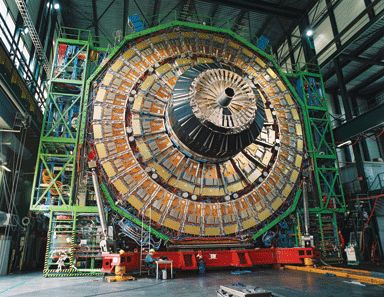
The Compact Muon Solenoid, which also detects particles, but in a different way
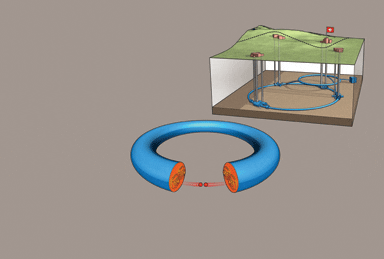
The Large Hadron Collider operates in a circular tunnel 100m below the border between France and Switzerland. There are four surface facilities, three of which are on the French side of the border, and four particle detectors at points along the tunnel. The protons are accelerated along parallel tracks before being collided. Protons shown not actual size, obviously.
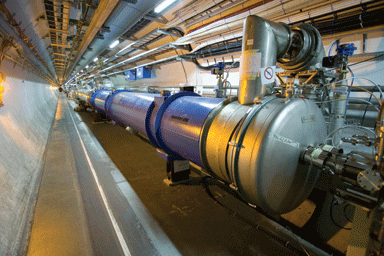
The 27km-long particle accelerator tunnel, where protons are spun up to almost the speed of light


